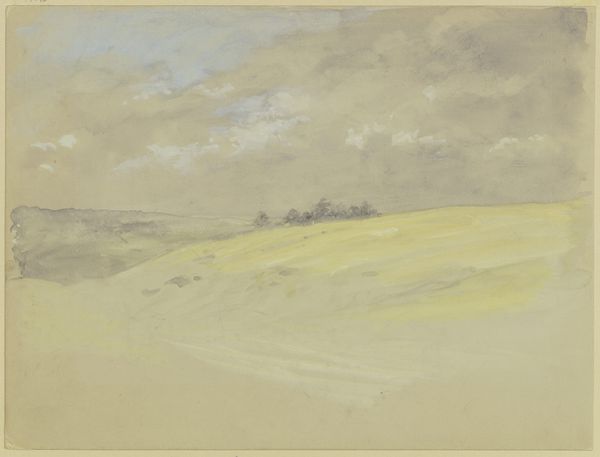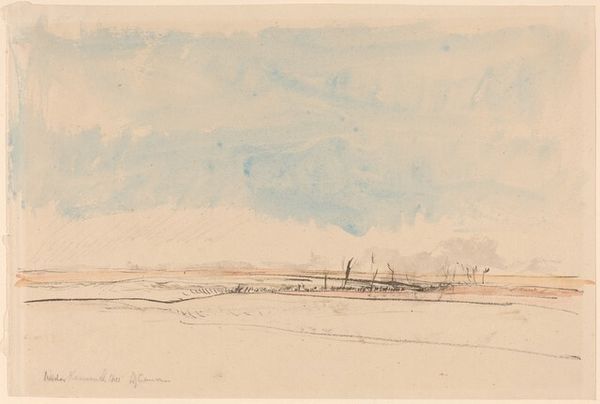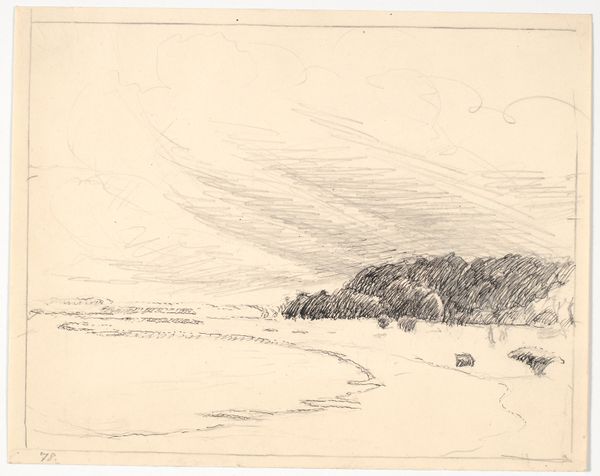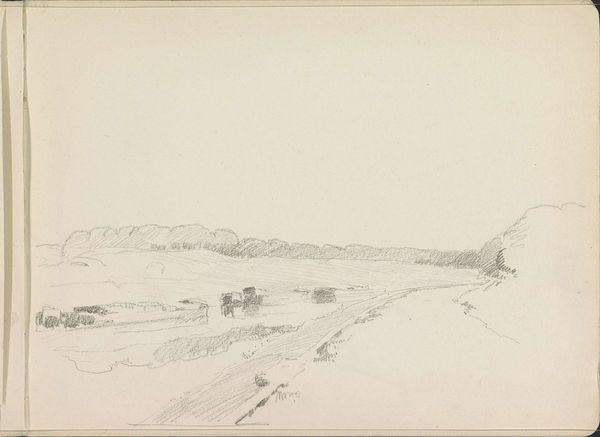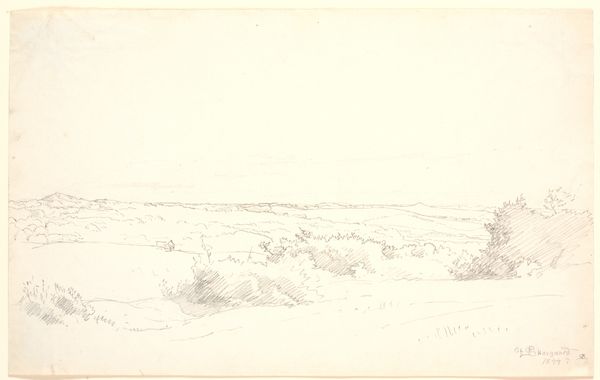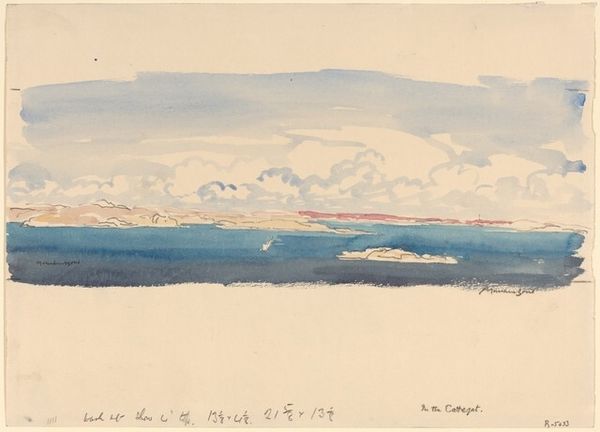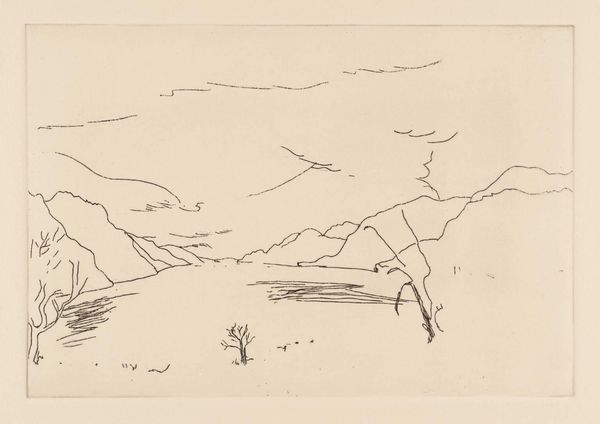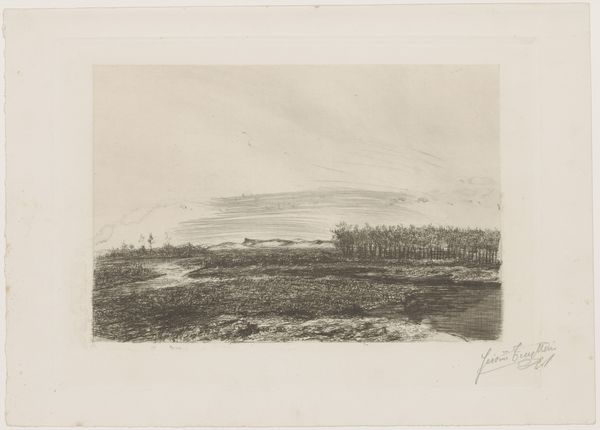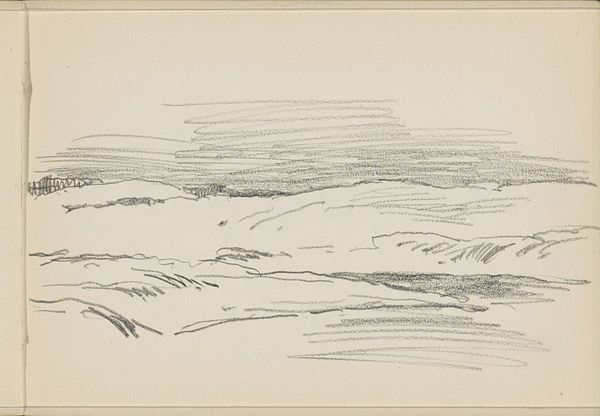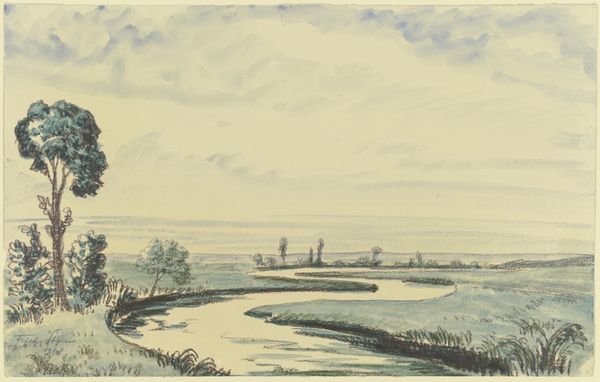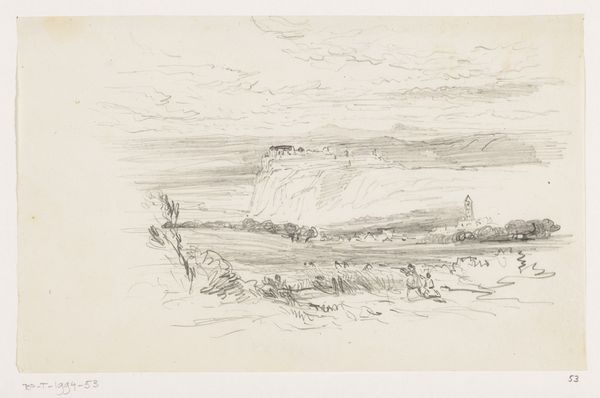
Copyright: Public Domain
Curator: Immediately I notice this incredible diffusion of light, almost bleached across the scene. Editor: Here we have Alfred Thon's "Landscape near Avignon," created using watercolor on paper in 1924 or 1926, part of the Städel Museum's collection. It’s classified within the Post-Impressionist movement, reflecting its modern, landscape style. Curator: Right. What strikes me is the subdued palette – a wash of browns and yellows that creates a mood of quiet contemplation, perhaps a little melancholic, evocative of barren land in transition. It definitely speaks to a moment of introspection, doesn't it? Editor: Absolutely, and considering watercolor's inherent challenges – its transparency and the limited control one has over the medium—I am wondering if the subdued colors were also simply a matter of material availability in the interwar period. Maybe, this was also dictated by the type of paper readily found? Curator: An intriguing point. Material scarcity and availability affecting creative choice – makes perfect sense. And speaking of choice, let’s observe the way Thon positions the forms: the sky nearly dissolving into the earth, flattening the landscape, creating a rather dreamlike quality. Do you perceive any sense of narrative or maybe underlying psychological element here? Editor: Perhaps the erasure of firm lines signals something broader. Beyond formal concerns of flatness, this choice speaks to the breaking-down of hierarchical, industrial landscapes... Or maybe I am trying to see too much. Curator: I think not. There is no mistaking his fascination for symbolic, and not simply descriptive, possibilities. Also look at how forms such as the small vertical strokes near the horizon seem to suggest trees, yet are not trees exactly. There is an ambiguous and permeable relation between things – quite typical for its time. Editor: Exactly, blurring that rigid distinction between representation and… perhaps the inner life, as it were. Curator: And it speaks volumes about the lasting pull of even modest materials, and quietude to transport a viewer across time. Editor: I’d agree – showing that often the deepest investigations require simple instruments.
Comments
No comments
Be the first to comment and join the conversation on the ultimate creative platform.
